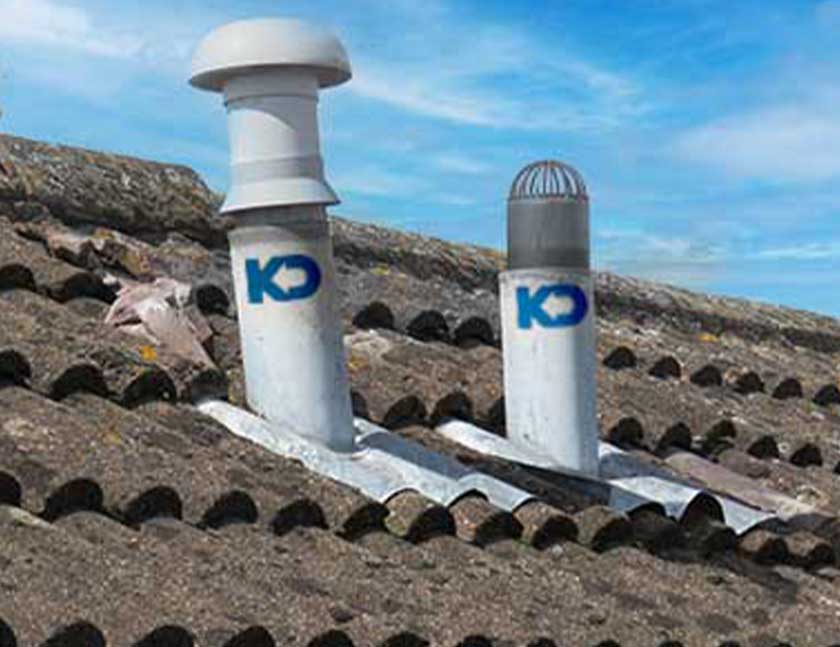The Importance of Ventilation in Building Plumbing Systems
The Importance of Ventilation in Building Plumbing Systems
Blog Article
We've found this great article involving The Upsides of Proper Ventilation in Plumbing Design directly below on the web and thought it made perfect sense to write about it with you here.

Proper ventilation in plumbing systems is often overlooked, yet it is crucial for preserving the capability and safety and security of your home's pipes. Ventilation helps control air pressure, prevent the build-up of dangerous gases, and guarantee the reliable removal of waste. In this guide, we will certainly check out the importance of appropriate plumbing ventilation, just how it functions, and the benefits it offers your pipes system.
Recognizing Ventilation in Pipes
Air flow in plumbing refers to the network of pipelines that allow air to move with the drain system. These vents offer multiple functions, consisting of controling atmospheric pressure within the pipelines, stopping sewer gases from getting in the home, and aiding in the smooth circulation of wastewater.
Exactly How Air Flow Works in Plumbing Systems
Atmospheric Pressure Policy
Proper air flow preserves balanced air pressure within the pipes system. When water streams via pipes, it displaces air. Without sufficient air flow, this displacement can produce unfavorable pressure, leading to slow drains pipes or siphoning of water from catches, which can create undesirable smells to seep into the home.
Stopping Sewer Gas Accumulation
Among one of the most critical functions of pipes vents is to prevent sewage system gases, such as methane and hydrogen sulfide, from collecting within the home. These gases can position severe wellness threats and are very flammable. Vent pipes allow these gases to get away safely outdoors.
Helping in Waste Removal
Air flow aids in the reliable removal of wastewater by protecting against airlocks in the drainage system. When air can move easily via the vents, it enables water and waste to move smoothly via the pipelines, decreasing the threat of clogs and backups.
Sorts Of Plumbing Vents
Main Heap Vent
The major stack air vent, additionally referred to as the air vent pile, is the primary air vent in a pipes system. It extends from the primary drainpipe line up via the roofing, allowing gases to leave and fresh air to enter the system.
Branch Vent
Branch vents link to the major pile vent and serve specific components, such as sinks, toilets, and showers. These vents ensure that each fixture has ample air flow to function effectively.
Air Admission Shutoff (AAV).
An Air Admission Shutoff (AAV) is a one-way valve that permits air to go into the pipes system without the need for a typical vent pipe extending with the roof. AAVs are generally made use of in renovations or areas where mounting a common vent is unwise.
Signs of Poor Ventilation in Pipes.
Slow Draining Fixtures.
If your sinks, tubs, or toilets are draining gradually, maybe an indication of poor air flow. Insufficient air circulation can produce a vacuum result, making it tough for water to drain correctly.
Gurgling Sounds.
Gurgling noises originating from drains pipes are often a result of air being drawn via water catches due to unfavorable pressure in the pipelines. This is a clear indication of not enough ventilation.
Unpleasant Odors.
Sewage system odors inside your home are a warning that your pipes system is not effectively ventilated. This could imply that sewage system gases are not being properly vented outside, bring about potentially hazardous problems.
Typical Ventilation Blunders.
Inadequate Vent Sizing.
Using undersized vent pipelines can lead to poor air flow and pressure imbalances in the system. It's necessary to utilize vents that satisfy the particular demands of your plumbing system.
Improper Vent Placement.
Positioning vents also much from the fixtures they serve can lower their performance. Appropriate placement ensures that air can move easily and efficiently with the system.
Ignoring Code Needs.
Building ordinance offer details guidelines for plumbing ventilation. Neglecting these codes can result in a system that stops working to function properly and might lead to costly repairs or carcinogen.
Advantages of Proper Air Flow.
Boosted System Efficiency.
Effectively ventilated pipes systems operate a lot more efficiently, with fewer obstructions, faster draining pipes, and less pressure on the pipelines. This efficiency extends the life expectancy of the plumbing system.
Improved Air Quality.
By stopping drain gases from entering your home, correct air flow adds to better interior air high quality, making your living environment healthier and much more comfortable.
Preventing Water Damages.
Sufficient ventilation assists stop water from being siphoned out of traps, which can result in drain gases going into the home and triggering water damage gradually.
Actions to Make Certain Correct Ventilation.
Consulting Pipes Codes.
Always consult neighborhood plumbing codes when designing or customizing your pipes system. These codes offer the essential guidelines for appropriate airing vent and ensure your system satisfies safety requirements.
Normal Inspection and Upkeep.
Regular evaluations can aid recognize prospective air flow concerns prior to they become major issues. Upkeep jobs, such as cleaning up air vent pipelines and checking for blockages, are necessary for maintaining the system in good working order.
Expert Setup.
For new setups or major modifications, it's wise to work with a specialist plumbing professional. They have the know-how to make sure the air flow system is correctly made and set up according to code.
Conclusion.
Correct ventilation is a crucial part of any pipes system, ensuring that it functions effectively and securely. By comprehending the importance of ventilation, recognizing the signs of bad ventilation, and taking actions to keep your system, you can protect against costly concerns and secure your home's air high quality.
4 Things You Should Know About Your Plumbing Vents
What Plumbing Vents Are
Also called a vent stack, a plumbing vent is a vertical pipe attached to your drain line that runs through your roof. The plumbing vent pipe, or plumbing air vent, removes gas and odors from your plumbing system and allows fresh air to enter the pipes, helping the water to flow out of the drain pipes.
What Plumbing Vents Do
Plumbing vents have two basic functions. One of which is to allow unpleasant smelling wastewater and sewer gasses to escape your plumbing system instead of entering your home. Plumbing vent pipes are typically located on roofs, away from windows, to ensure the fumes exit the home completely.
The other function of the plumbing vent is to move fresh air into your plumbing system. This helps move water through every plumbing fixture in your house, like toilets and sink drains. Think of the way in which you need to let a little air into the bottle as you pour soda in order to make the drink flow smoothly.
Different Types of Plumbing Vents
True vent: This is the most common vent option. In simplest terms, a true vent is a vertical pipe attached to your drain line that exits through the roof. They often function as the main vent that other fixtures can connect to. Re-vent pipe or auxiliary vent: Attached to the drain line near specific plumbing fixtures, re-vent pipes run up and over to connect to the main vent. Common vent: Two plumbing fixtures installed on opposite sides of a wall are typically tied into the vent stack using something known as a sanitary cross. Wet vent: This venting option operates as a drain pipe and a vent at the same time. Wet vent drainage systems drain water from one fixture while venting the air from another. Although they’ve been used for over 100 years, wet vent systems have only recently been added to the plumbing code in many areas. If you’re planning on installing one in a bathroom remodel, make sure you check your local code prior to construction. Loop vent: For free-standing fixtures like kitchen island sinks, loop vents are ideal. These vent pipes run under the floor, rise from the P-trap, and create a loop inside the cabinet sink. Air admittance valve: An AAV is a one-way mechanical valve typically installed at the site of the plumbing fixture. AAVs allow venting to occur without having to tie into a larger venting system. They’re ideal for venting fixtures where you aren’t able to easily connect to an existing vent system. Common Plumbing Vent Issues
Although vent pipes typically don’t have water flowing through them, they’re still subject to many typical plumbing issues. For example, clogs are one of the most common problems associated with sewer vent pipes. If your vent pipe gets clogged, all of your plumbing fixtures tied into the vent stack will be affected.
A sink with a slow drain that bubbles and gurgles or a strong sewage smell around your toilet are both indicators that your toilet vent pipe is clogged. Because most vent pipes exit through the roof, old leaves, twigs or even a bird’s nest could be clogging the pipe.
Clogs in your vent pipe system cause a buildup of negative pressure, meaning that water won’t be able to flow out of your home very well. It’s similar to putting your finger over the opening of a straw to trap water inside. When you remove your finger, the water is able to flow out of the straw.
If you suspect you have any blockage in your vent, make sure you have a professional come examine the situation. Left unchecked, a blocked air vent can lead to other costly repairs, like leaks and sediment buildup.
Under Pressure
Pipe vents are essential aspects of a home’s plumbing system. Owning a home means learning about all sorts of things you never put much thought into before. But by understanding as much as you can about the important systems of your home, you can keep those budgets intact and those anxiety levels low.
https://www.homeserve.com/en-us/blog/home-improvement/plumbing-vents/

Do you appreciate more info about Essential Plumbing Vent Pipes: Understanding Their Role? Make a remark directly below. We'd be glad to hear your views about this blog posting. We are looking forward that you visit us again before long. Remember to take a moment to distribute this page if you enjoyed reading it. We thank you for reading our article about What Are Plumbing Vents and Why Are They Important?.
Explore Report this page